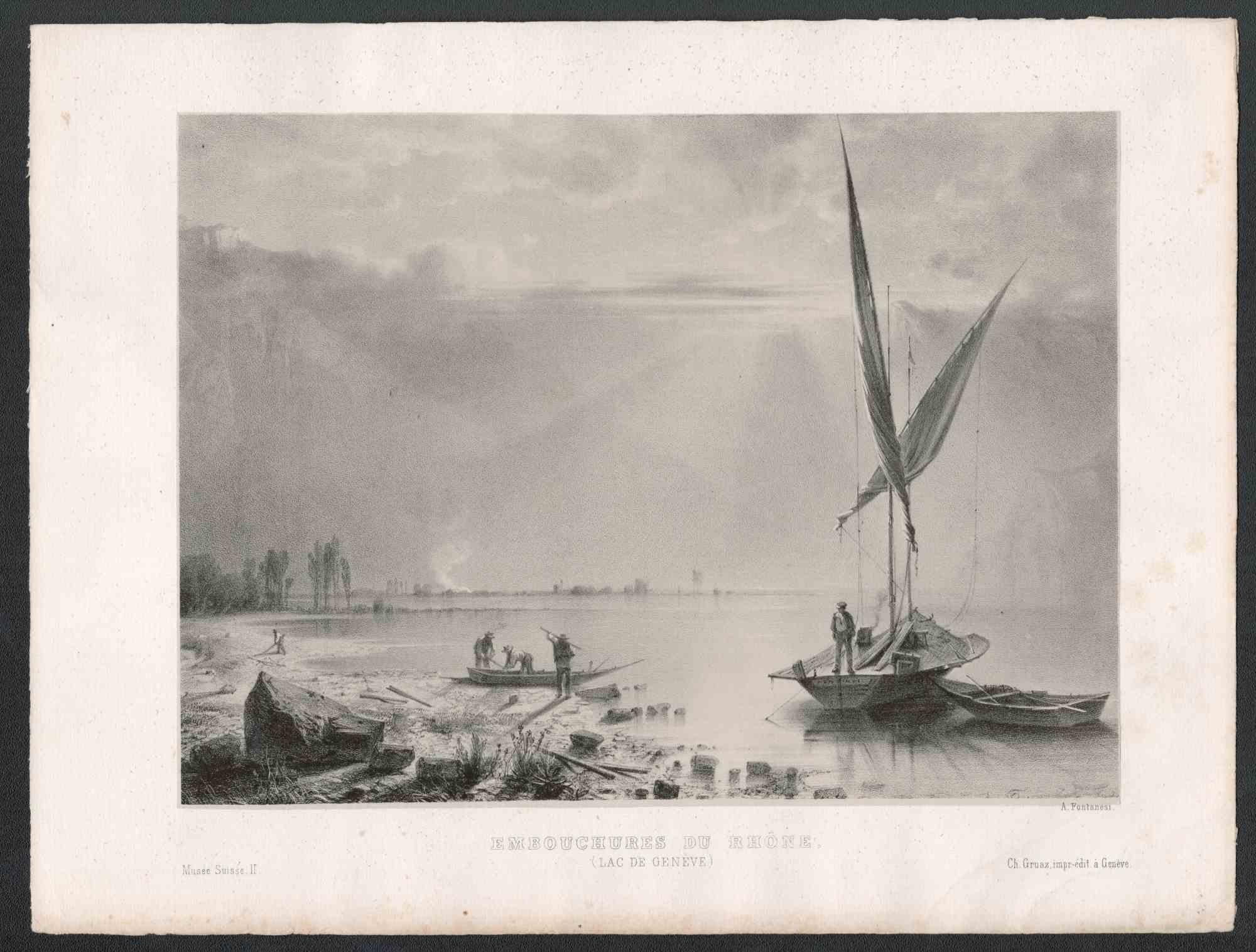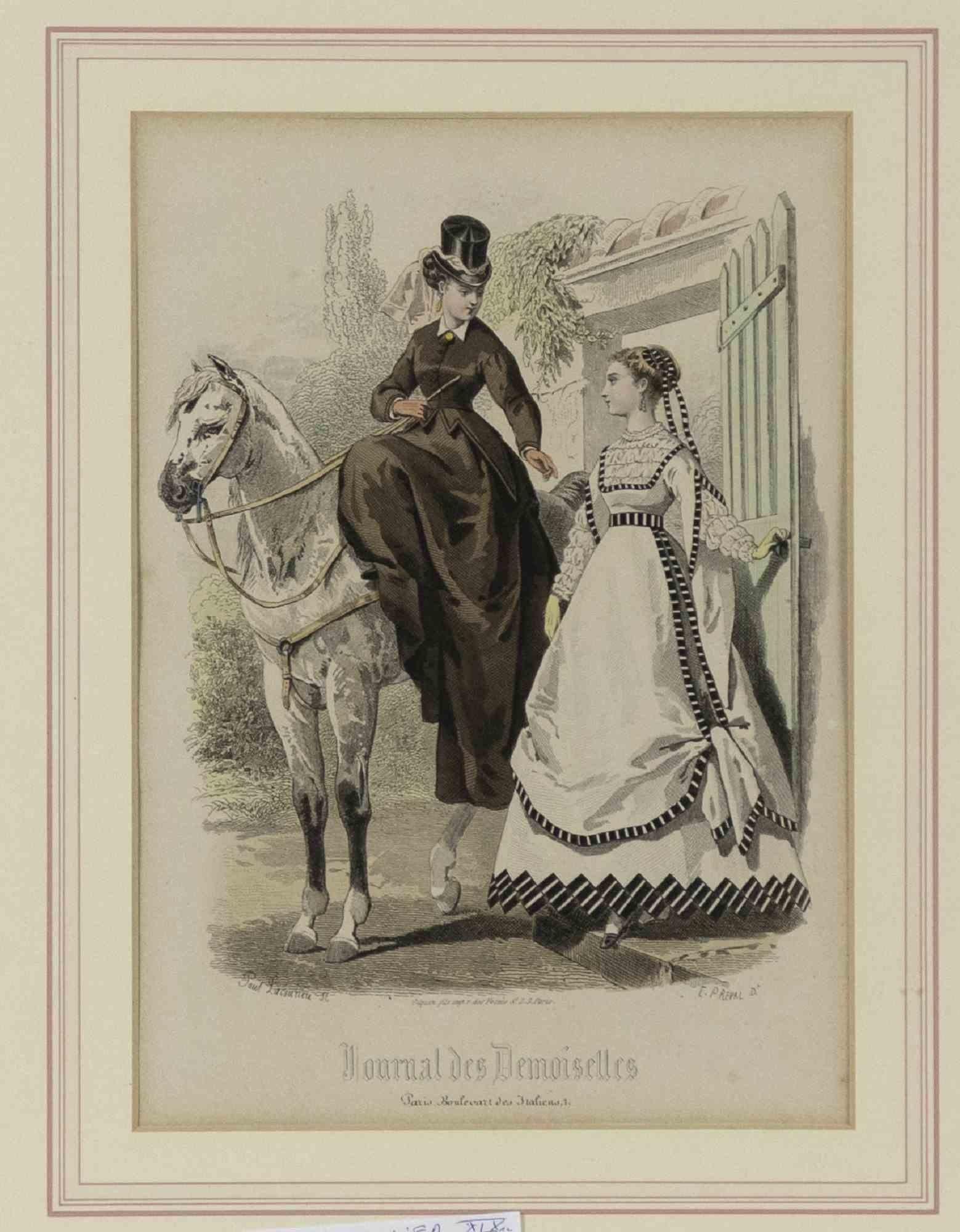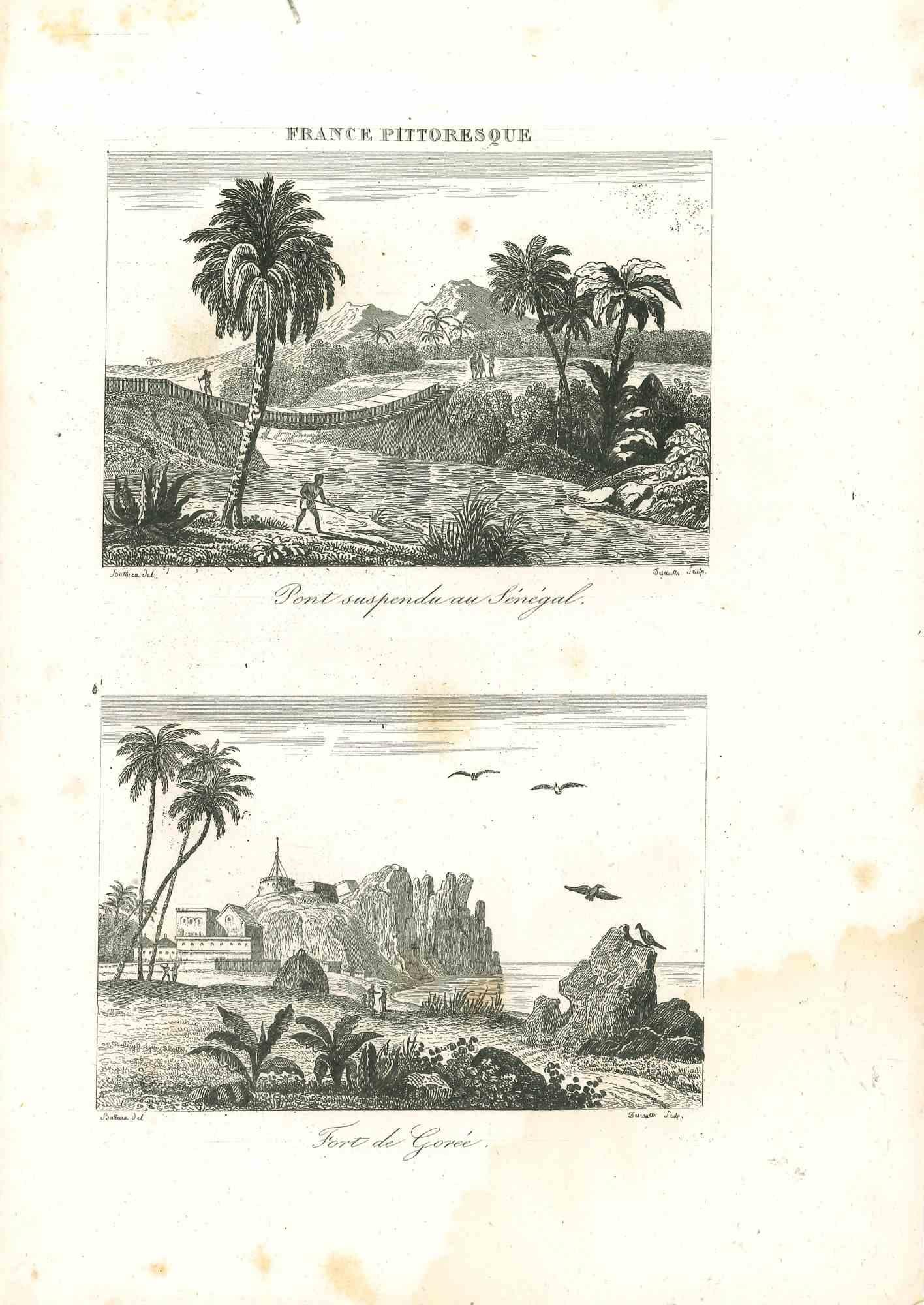Items Similar to Marc Chagall 'Green Bird Lithograph on Arches' - Lithograph
Want more images or videos?
Request additional images or videos from the seller
1 of 8
Marc Chagall 'Green Bird Lithograph on Arches' - Lithograph1962
1962
About the Item
Paper Size: 30.5 x 22 inches ( 77.47 x 55.88 cm )
Image Size: 30.5 x 22 inches ( 77.47 x 55.88 cm )
Framed: No
Condition: A-: Near Mint, very light signs of handling
Additional Details: Reference-MOURLOT 354, printer's proof, unsigned and not numbered.
Color lithograph, 1962, on wove paper, published by Maeght, Paris, with full margins.
Shipping and Handling: We ship Worldwide. For Domestic and International shipments alike, we use heavy, thick-walled UPS and FedEx Approved shipping tubes to ship all items that are rollable. For items that cannot be rolled, we pack the item flat.
Attention International Buyers, Please Note: Import duties, taxes, and charges are not included in the item price or shipping cost. These charges are the buyer's responsibility. Please check with your country's customs office to determine what these additional costs will be prior to bidding or buying.
- Creation Year:1962
- Dimensions:Height: 30.5 in (77.47 cm)Width: 22 in (55.88 cm)Depth: 1 in (2.54 cm)
- Medium:
- Movement & Style:
- After:Marc Chagall (1887 - 1985, French)
- Period:
- Framing:Framing Options Available
- Condition:All items are carefully stored. Condition is a main concern, unless otherwise indicated, all items are in mint condition. Additional pictures are available upon request. Feel free to contact our team if you have any questions or concerns. Thank you.
- Gallery Location:Brooklyn, NY
- Reference Number:Seller: YY70111stDibs: LU1294114210762
About the Seller
4.9
Platinum Seller
These expertly vetted sellers are 1stDibs' most experienced sellers and are rated highest by our customers.
Established in 1992
1stDibs seller since 2019
1,819 sales on 1stDibs
Typical response time: <1 hour
- ShippingRetrieving quote...Ships From: Brooklyn, NY
- Return PolicyA return for this item may be initiated within 14 days of delivery.
Auctions on 1stDibs
Our timed auctions are an opportunity to bid on extraordinary design. We do not charge a Buyer's Premium and shipping is facilitated by 1stDibs and/or the seller. Plus, all auction purchases are covered by our comprehensive Buyer Protection. Learn More
More From This SellerView All
- 1974 After Marc Chagall 'Chagall Lithographs IV (1969-1973)' Catalogue RaisonneBy Marc ChagallLocated in Brooklyn, NYPaper Size: 12.75 x 10 inches ( 32.385 x 25.4 cm ) Image Size: 12.75 x 10 inches ( 32.385 x 25.4 cm ) Framed: No Condition: A: Mint Additional Details: 1974 Crown Publishers, I...Category
1970s Modern Prints and Multiples
MaterialsLithograph
- Marc Chagall-The Revolution-Original LithographBy (after) Marc ChagallLocated in Brooklyn, NYPoster created for the annual exhibition, "Painters, the witness of their time", at the Galliera Museum, Paris. The lithograph was issued from a detail of a preparatory study for the...Category
20th Century Modern Prints and Multiples
MaterialsLithograph
- 1963 Marc Chagall 'Inspired' Stone LithographBy Marc ChagallLocated in Brooklyn, NYPaper Size: 12.5 x 9.5 inches ( 31.75 x 24.13 cm ) Image Size: 12.5 x 9.5 inches ( 31.75 x 24.13 cm ) Framed: No Condition: A: Mint Additional Details: First edition lithograph...Category
1960s Modern Prints and Multiples
MaterialsLithograph
- Pablo Picasso-Cavalier/HorsemanLocated in Brooklyn, NYFrom Toros y Toreros, texte de Luis Miguel DominguinCategory
20th Century Modern Prints and Multiples
MaterialsLithograph
- Marc Chagall-Carmen-By (after) Marc ChagallLocated in Brooklyn, NYSku: MI1156 Artist: Marc Chagall Title: Carmen Year: 1966 Signed: No Medium: Lithograph Paper Size: 40 x 26 inches ( 101.6 x 66.04 cm ) Image Size: 40 x 26 inches ( 101.6 x 66.04 cm ...Category
20th Century Modern Prints and Multiples
MaterialsLithograph
- HENRI MATISSE Planche XXVIII, 1920, Lithograph, FIRST EDITIONBy Henri MatisseLocated in Brooklyn, NYPaper Size: 12 x 8 inches ( 30.48 x 20.32 cm ) Image Size: 9.75 x 6.5 inches ( 24.765 x 16.51 cm ) Framed: No Condition: A-: Near Mint, very light signs of handling Additional Detai...Category
1920s Modern Prints and Multiples
MaterialsLithograph
You May Also Like
- Pablo Picasso - Painter and His Model - Original LithographBy Pablo PicassoLocated in Collonge Bellerive, Geneve, CHPablo Picasso - Painter and His Model - Original Lithograph 1964 Dimensions: 30 x 20 cm Edition of 200 (one of the 200 on Vélin de Rives) Mourlot Press, 1964 Unsigned and unumbered ...Category
1960s Modern Abstract Prints
MaterialsLithograph
- Pablo Picasso - The Painter - Original LithographBy Pablo PicassoLocated in Collonge Bellerive, Geneve, CHPablo Picasso - Original Lithograph Title: Painter and his Model From the illustrated book "Regards sur Paris" (Paris: André Sauret, 1962) Edition of 180 Individual prints were not s...Category
1960s Modern Portrait Prints
MaterialsLithograph
- Eduardo Arroyo - Jean Moulin - Original LithographBy Eduardo ArroyoLocated in Collonge Bellerive, Geneve, CHEduardo Arroyo - Jean Moulin - Original Lithograph 1984 Conditions: excellent Edition: 495 Dimensions: 37,3 x 58 cm Editions: TrinckvelCategory
1980s Modern Landscape Prints
MaterialsLithograph
- Marc Chagall - Moses with Tablets of Stone - Original LithographBy Marc ChagallLocated in Collonge Bellerive, Geneve, CHMarc Chagall, Original Lithograph depicting an instant of the Bible. Technique: Original lithograph in colours Year: 1956 Sizes: 35,5 x 26 cm / 14" x 10.2" (sheet) Published by: Éditions de la Revue Verve, Tériade, Paris Printed by: Atelier Mourlot, Paris Documentation / References: Mourlot, F., Chagall Lithograph [II] 1957-1962, A. Sauret, Monte Carlo 1963, nos. 234 and 257 Marc Chagall (born in 1887) Marc Chagall was born in Belarus in 1887 and developed an early interest in art. After studying painting, in 1907 he left Russia for Paris, where he lived in an artist colony on the city’s outskirts. Fusing his own personal, dreamlike imagery with hints of the fauvism and cubism popular in France at the time, Chagall created his most lasting work—including I and the Village (1911)—some of which would be featured in the Salon des Indépendants exhibitions. After returning to Vitebsk for a visit in 1914, the outbreak of WWI trapped Chagall in Russia. He returned to France in 1923 but was forced to flee the country and Nazi persecution during WWII. Finding asylum in the U.S., Chagall became involved in set and costume design before returning to France in 1948. In his later years, he experimented with new art forms and was commissioned to produce numerous large-scale works. Chagall died in St.-Paul-de-Vence in 1985. The Village Marc Chagall was born in a small Hassidic community on the outskirts of Vitebsk, Belarus, on July 7, 1887. His father was a fishmonger, and his mother ran a small sundries shop in the village. As a child, Chagall attended the Jewish elementary school, where he studied Hebrew and the Bible, before later attending the Russian public school. He began to learn the fundamentals of drawing during this time, but perhaps more importantly, he absorbed the world around him, storing away the imagery and themes that would feature largely in most of his later work. At age 19 Chagall enrolled at a private, all-Jewish art school and began his formal education in painting, studying briefly with portrait artist Yehuda Pen. However, he left the school after several months, moving to St. Petersburg in 1907 to study at the Imperial Society for the Protection of Fine Arts. The following year, he enrolled at the Svanseva School, studying with set designer Léon Bakst, whose work had been featured in Sergei Diaghilev's Ballets Russes. This early experience would prove important to Chagall’s later career as well. Despite this formal instruction, and the widespread popularity of realism in Russia at the time, Chagall was already establishing his own personal style, which featured a more dreamlike unreality and the people, places and imagery that were close to his heart. Some examples from this period are his Window Vitebsk (1908) and My Fianceé with Black Gloves (1909), which pictured Bella Rosenfeld, to whom he had recently become engaged. The Beehive Despite his romance with Bella, in 1911 an allowance from Russian parliament member and art patron Maxim Binaver enabled Chagall to move to Paris, France. After settling briefly in the Montparnasse neighborhood, Chagall moved further afield to an artist colony known as La Ruche (“The Beehive”), where he began to work side by side with abstract painters such as Amedeo Modigliani and Fernand Léger as well as the avant-garde poet Guillaume Apollinaire. At their urging, and under the influence of the wildly popular fauvism and cubism, Chagall lightened his palette and pushed his style ever further from reality. I and the Village (1911) and Homage to Apollinaire (1912) are among his early Parisian works, widely considered to be his most successful and representative period. Though his work stood stylistically apart from his cubist contemporaries, from 1912 to 1914 Chagall exhibited several paintings at the annual Salon des Indépendants exhibition, where works by the likes of Juan Gris, Marcel Duchamp and Robert Delaunay were causing a stir in the Paris art world. Chagall’s popularity began to spread beyond La Ruche, and in May 1914 he traveled to Berlin to help organize his first solo exhibition, at Der Sturm Gallery. Chagall remained in the city until the highly acclaimed show opened that June. He then returned to Vitebsk, unaware of the fateful events to come. War, Peace and Revolution In August 1914 the outbreak of World War I precluded Chagall’s plans to return to Paris. The conflict did little to stem the flow of his creative output, however, instead merely giving him direct access to the childhood scenes so essential to his work, as seen in paintings such as Jew in Green (1914) and Over Vitebsk (1914). His paintings from this period also occasionally featured images of the war’s impact on the region, as with Wounded Soldier (1914) and Marching (1915). But despite the hardships of life during wartime, this would also prove to be a joyful period for Chagall. In July 1915 he married Bella, and she gave birth to a daughter, Ida, the following year. Their appearance in works such as Birthday (1915), Bella and Ida by the Window (1917) and several of his “Lovers” paintings give a glimpse of the island of domestic bliss that was Chagall’s amidst the chaos. To avoid military service and stay with his new family, Chagall took a position as a clerk in the Ministry of War Economy in St. Petersburg. While there he began work on his autobiography and also immersed himself in the local art scene, befriending novelist Boris Pasternak, among others. He also exhibited his work in the city and soon gained considerable recognition. That notoriety would prove important in the aftermath of the 1917 Russian Revolution when he was appointed as the Commissar of Fine Arts in Vitebsk. In his new post, Chagall undertook various projects in the region, including the 1919 founding of the Academy of the Arts. Despite these endeavors, differences among his colleagues eventually disillusioned Chagall. In 1920 he relinquished his position and moved his family to Moscow, the post-revolution capital of Russia. In Moscow, Chagall was soon commissioned to create sets and costumes for various productions at the Moscow State Yiddish...Category
1950s Modern Figurative Prints
MaterialsLithograph
- Jean Dubuffet - original lithograph from XXe Siecle magazineBy Jean DubuffetLocated in Collonge Bellerive, Geneve, CHJean Dubuffet - Original Lithograph from XXe Siecle magazine 1958 Dimensions: 32 x 25 cm Edition: G. di San Lazzaro. Unsigned and unumbered as issuedCategory
1960s Modern Figurative Prints
MaterialsLithograph
- Pablo Picasso - The Ballet Dancer - Original LithographBy Pablo PicassoLocated in Collonge Bellerive, Geneve, CHPablo Picasso - Original Lithograph Title: The Ballet Dancer Dimensions: 32 x 24 cm 1954 Reference: Bloch 767 Frontispiece for the book "Le Ballet" (Paris: Editions Hachet, 1954) by...Category
1950s Modern Portrait Prints
MaterialsLithograph





